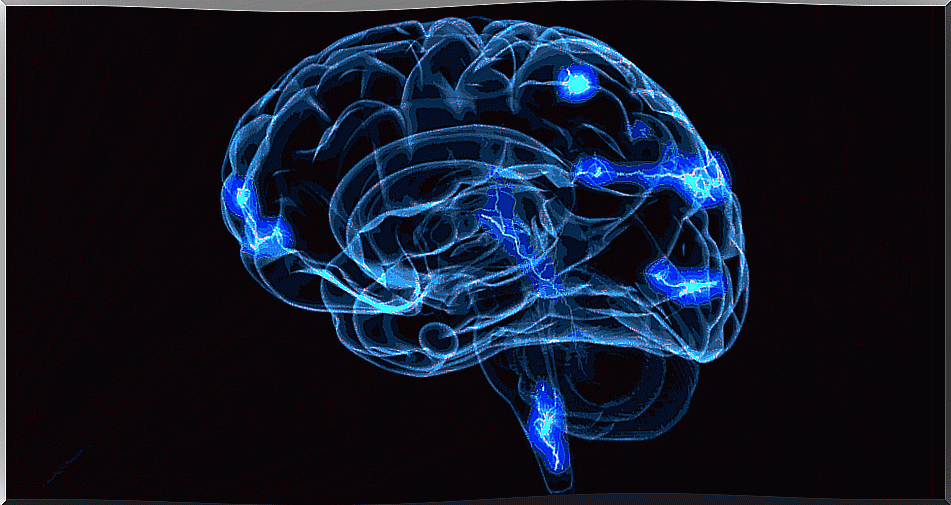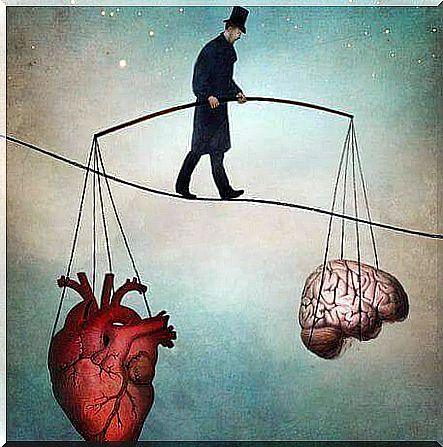Amygdala-Hijack: When We Are Not In Control Of Our Emotions

Have you ever had the feeling that you have been controlled by a very strong emotion that has made you lose control? Or have you ever let yourself be guided by a feeling and said things that you later regretted? Perhaps you have also wondered if it was a feeling that affects your mind? If you answered yes to any of these questions, it means that you have experienced the amygdala hijack at some point in your life.
The English term “amygdala hijack” was coined by the psychologist Daniel Goleman to explain this type of uncontrollable emotional reaction. Goleman, an expert on emotional intelligence, says that the secret of why we sometimes behave irrationally has to do with instantaneous and immediate loss of emotional control because the amygdala is taking control of our brain.
“Intense negative emotions demand the full attention of the individual and make any attempt to focus on anything else impossible.”
Daniel Goleman
What is the amygdala?
The amygdala is a pair of core areas of the brain in the medial part of the temporal lobe. It’s easy to spot because it’s shaped like an almond. Together with the hippocampus and other structures, it forms the limbic system, which is also known colloquially as the “emotional brain”.
The limbic system regulates the physiological responses to certain stimuli, which means that all of its structures are important for the emotional control of a person’s behavior. But the reason the amygdala plays such a large role within the limbic system is that it is critical to our survival, as its main function is to internalize feelings and pattern responses to them, both physiology and that Regarding behavior.
In order to understand the control of the amygdala over our emotions, one of the main things we need to know is that not only does it induce an emotional response, but that, because of its connection with the frontal lobe, it also allows for suppressed behaviors.

How does the amygdala hijack come about?
The amygdala hijack is an immediate and disproportionate emotional response to the stimulus that triggered it because it is perceived as a threat to emotional stability. So it arises because the amygdala prevents the activation of other areas of the brain, especially the cortex, by controlling the behavior of the subject and turning off the area of the brain that makes us more rational.
The frontal cortex, incapacitated in the amygdala hijack, is the part of our brain responsible for reasoning or planning our actions. The amygdala, on the other hand, is part of the more primitive structures of our brain and regulates our emotions. Our logical way of thinking must therefore be subordinate to our emotions.
“One has to remember that the stimulus is the vehicle of the emotion and that the origin of every impulse is a far-reaching feeling that needs to be expressed during the action.”
Daniel Goleman
You may find it strange that the most developed part of our brain, the cortex, can be dominated by a structure as primitive as the amygdala. Still, it makes sense if we look at it from an evolutionary perspective: Thousands of years ago, it was about survival. When we were still hunting in the jungle and met a lion, for example, our amygdala deactivated the rest of the functions of our brain, as there was no time to think about the danger, it was about fight and flight.
But even if we are exposed to enormous stress today, even if this does not threaten our survival, such as a traffic jam, then our amygdala takes control of us. This causes adrenaline and cortisol to spread throughout our bodies, which excite our bodies and control our emotions for an estimated four hours.
So when a high stressor creates an intense feeling, we usually feel for a period of time what psychology describes as an “emotional hangover.” This hangover is caused by hormones that are still in our organism and that make a feeling of discomfort last much longer.

What can we do in such situations?
You may have heard before that we should count to ten when we are upset, but when we are extremely angry we should count to a thousand. This is an extremely smart strategy because when we start counting we activate our cortex, the frontal and logical part of our brain which, as we have said, is turned off during the amygdala hijack.
So as soon as you start counting when you have an intense feeling caused by stress, you can distance yourself from it, give yourself space and understand what is happening at that moment. You can use the logical part of your brain again to avoid these impulsive reactions generated during an amygdala hijack.
Another strategy that usually works well is to consciously focus on your breathing, also known as the element of mindfulness. When you focus on your breathing every time you inhale, you bring yourself back to the present and remain calm. This activates your parasympathetic nervous system, which inhibits the sympathetic nervous system that is activated during an amygdala hijack.
In order to escape the amygdala hijack when it is activated by an important stress factor, one has to put some distance between what has happened and the present moment. It is highly recommended that you engage in activities that activate the logical part of your brain or others, such as mindfulness exercises, that will get you to focus on the present and find new ways to experience the emotion that is causing you you feel in this moment.








